日本人として初めてノーベル文学賞を受賞した文豪、川端康成。彼の作品は、なぜ今なお国内外の人々を惹きつけてやまないのでしょうか。その源泉は、単なる美しい日本の描写に留まりません。彼の文学の奥底には、鋭敏な感性で捉えられた人間の孤独や愛、そして移ろいゆくものへの限りない眼差しが横たわっています。その作品世界は、日本の伝統的な美意識と西洋から流れ込んだ近代的な表現が、絶妙なバランスで融合した唯一無二のものです。
- 「孤独」が生んだ美意識:幼少期の相次ぐ肉親との死別が、彼の作品に流れる無常観と繊細な心理描写の根源となった。
- 新感覚派としての革新性:伝統美を描くだけでなく、感覚的な表現を重視するモダニズム文学の旗手として、新たな文体と作品世界を切り拓いた。
- ノーベル賞受賞の光と影:世界的な栄誉の場で、彼は華やかな現代日本ではなく、失われゆく「美しい日本」の心を語り、その伝統への深い想いと警鐘を世界に示した。
孤高の文豪、その原点
川端康成の文学を理解する上で、彼の生い立ちは欠かすことができません。1899年に大阪で生まれた彼は、わずか2歳で父を、3歳で母を亡くします。その後、祖母、姉とも死別し、15歳の時には唯一の肉親であった祖父をも看取り、天涯孤独の身となりました。この相次ぐ喪失体験は、彼の心に深い「孤児根性」を刻みつけ、生涯にわたってその作品世界の基調となる無常観や孤独感、そして人との繋がりへの渇望を育むことになります。
初期の代表作である『伊豆の踊子』では、孤独を抱えた青年が旅芸人の一行と出会い、踊子の少女に淡い恋心を抱くことで、心が解きほぐされていく様が瑞々しく描かれています。これは、彼自身の孤独からの救済を求める心の旅路の投影とも言えるでしょう。
美の探求と代表作たち
川端康成は、東京帝国大学在学中から文芸活動を始め、横光利一らと共に同人誌『文藝時代』を創刊します。彼らは「新感覚派」と呼ばれ、従来の写実主義的な描写とは一線を画し、主観的な感覚や印象を重視した斬新な表現を追求しました。このモダニズム文学運動は、彼の作風に革新性をもたらし、日本の伝統美を新たな視点から切り取ることを可能にしました。
その成果は、ノーベル賞受賞のきっかけともなった代表作『雪国』に結実しています。雪深い温泉町を舞台に、妻子ある男と芸者との儚い関係性を描いたこの作品は、「国境の長いトンネルを抜けると雪国であった。夜の底が白くなった。」というあまりにも有名な一文で始まります。駒子のひたむきな情熱と、それを虚しい徒労としか受け取れない島村の虚無感。この二人の関係性が、透き通るような雪景色の中で、非現実的なまでの美しさをもって描かれています。
その他にも、茶道の世界を通して歪んだ人間関係を描いた『千羽鶴』や、老いと家族、記憶をテーマにした『山の音』、京都を舞台に生き別れの双子の姉妹の運命を描いた『古都』など、数々の傑作を生み出し、日本文学における独自の地位を確立しました。
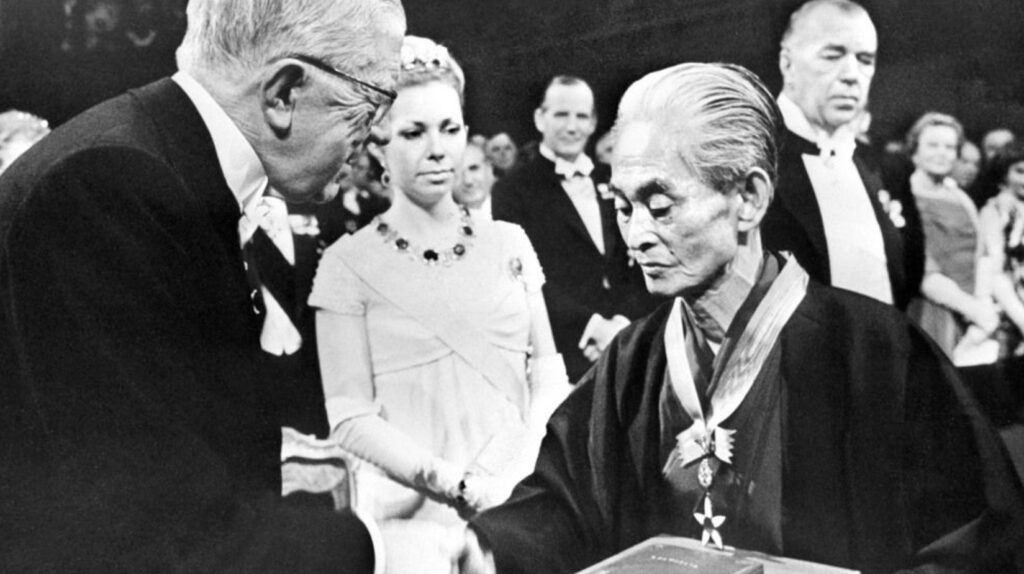
日本人初のノーベル賞という栄光
1968年、川端康成は日本人で初めてノーベル文学賞を受賞します。その授賞理由は「日本人の心の精髄を、すぐれた感受性をもって表現する、その物語の巧みさに対して」というものでした。彼の作品が描き出す繊細な心理描写と日本の美が、世界的に認められた瞬間でした。
世界が注目したのは、ストックホルムで行われた受賞記念講演「美しい日本の私」です。彼はこの場で、経済成長を遂げる現代の日本ではなく、道元や明恵といった中世の歌人や僧侶の詩歌を引用しながら、四季の移ろいや自然の中に「もののあはれ」を見出してきた、古来の日本人の精神性について語りました。それは、近代化の中で失われつつある日本の伝統的な美への深い愛情と、その未来に対する静かな警鐘のようにも響きました。この講演は、彼の文学が常に日本の古典美に深く根差していたことを、改めて世界に示すものとなったのです。
川端文学の遺したもの
川端康成は、その生涯を通じて「美」の探求者であり続けました。彼の作品は、日本の伝統的な美意識と西洋のモダニズムを見事に融合させ、人間の内面に潜む孤独、愛、そしてエロティシズムを、比類なき筆致で描き出しました。1968年のノーベル文学賞受賞は、日本文学が世界文学の一部であることを証明する画期的な出来事でした。
1972年にその生涯を閉じましたが、彼が遺した『雪国』や『伊豆の踊子』などの作品は、今なお色褪せることなく、多くの読者に愛され続けています。その文学は、日本人が持つ独特の美意識や精神性を世界に伝え、後世の作家にも大きな影響を与え続けています。
解説ポイント①:「孤独」が生んだ美意識:その作品に流れる無常観と繊細な心理描写
川端康成の文学の根底には、幼少期に両親、祖母、姉、祖父を次々と亡くしたという壮絶な体験が存在します。この「死にゆく人を看取る」という経験は、彼の感受性を鋭敏にし、作品全体に流れる独特の無常観、つまり「すべてのものは移ろい、消えていく」という感覚を形成しました。彼の描く登場人物たちは、しばしば深い孤独感を抱えています。しかしそれは、単に寂しいという感情だけではありません。孤独であるからこそ、他者との束の間の触れ合いや、自然の風景の美しさが際立ち、その一瞬の輝きが切実なものとして描かれるのです。『雪国』の島村が芸者・駒子の存在に強く惹かれながらも、決して彼女と深く交わることができない関係性は、この「つながりへの渇望」と「どうしようもない断絶感」という、彼の根源的なテーマを象徴しています。
解説ポイント②:新感覚派としての革新性:日本の伝統美と西洋モダニズムの融合
川端康成は、単に古い日本の美を描いた作家ではありません。彼は1920年代に「新感覚派」の旗手として文壇に登場しました。これは、第一次世界大戦後のヨーロッパで起こったダダイスムやシュルレアリスムといった前衛芸術運動に影響を受けた、日本のモダニズム文学運動です。彼らは、客観的な事実をありのままに描く自然主義に反発し、物事を主観的な感覚を通して捉え、それを斬新な比喩や文体で表現しようと試みました。例えば、無生物を主語にしたり、映画のモンタージュのような技法を取り入れたりするなど、その手法は非常に実験的でした。川端文学の独自性は、この西洋由来のモダンな表現方法を用いて、最も日本的とされる「もののあはれ」や「わびさび」といった伝統的な美意識を描き出した点にあります。この和洋の融合こそが、彼の文学を古びさせない普遍的な魅力の源泉となっています。
解説ポイント③:ノーベル賞受賞の光と影:「美しい日本の私」に込めた伝統への想いと警鐘
1968年のノーベル文学賞受賞は、日本にとって大きな名誉でしたが、川端自身がその場で語った内容は、手放しの喜びではありませんでした。受賞記念講演「美しい日本の私」で彼が主題としたのは、高度経済成長に沸く現代日本ではなく、和歌や禅の世界に息づく、繊細で儚い美意識でした。彼は道元禅師の「春は花 夏ほととぎす 秋は月 冬雪さえて 冷しかりけり」といった歌を引用し、日本人がいかに四季の移ろいや自然と一体となり、そこに深い精神性を見出してきたかを語ります。これは、急速な近代化・西洋化によって、そうした「美しい日本」の心が失われつつあることへの強い危機感の表れでもありました。世界的な栄誉の舞台で、あえて滅びゆくものの美しさを語る。その行為自体が、彼の文学の核心にある「もののあはれ」を体現したものであり、世界に対して日本の精神文化の深淵を示す、力強いメッセージとなったのです。
参考文献
- 川端康成、今も残る「自殺の謎」 「国宝」3つも所有!目利きの顔も – withnews(ウィズニュース)
- 【解説マップ】川端康成はどんな人?代表作や生涯など図解でわかりやすく – MindMeister
- 川端康成の美意識と文学世界:日本の伝統美と普遍性を求めて|松尾靖隆 – note
- ノーベル文学賞はどんな人が選ばれている?日本人の受賞者はだれ? – 速読なら日本速脳速読協会
- 斬新さが魅力⁈川端康成らの新感覚派を解説する – 日々の栞
- 川端康成「美しい日本の私」 大江健三郎「あいまいな日本の私」 日本と世界をつなぐ回路 – BOHEMEGALANTE
【English Article】
The Beauty and Pathos of Japan: A Deep Dive into the World of Nobel Laureate Yasunari Kawabata
Yasunari Kawabata was the first Japanese writer to be awarded the Nobel Prize in Literature. But why do his works continue to captivate readers both in Japan and abroad even today? The source of their appeal lies beyond mere depictions of a beautiful Japan. Deep within his literature is an unending gaze upon human loneliness, love, and the transient nature of things, all captured with a keen sensibility. His literary world is a unique creation where traditional Japanese aesthetics and modern expressions from the West are fused in an exquisite balance.
- Aesthetics Born from “Loneliness”: The successive deaths of his close relatives in his childhood became the source of the view of transience and the delicate psychological portrayals that flow through his works.
- Innovation as a “New Sensationalist”: He did not just depict traditional beauty; as a leading figure of a modernist literary movement that valued sensory expression, he pioneered a new style and artistic world.
- The Light and Shadow of the Nobel Prize: On the global stage of honor, he spoke not of a glittering modern Japan, but of the soul of a “Beautiful Japan” that was being lost, showing the world his deep feelings for tradition and sounding a note of caution.
The Starting Point of a Solitary Literary Master
To understand the literature of Yasunari Kawabata, one cannot overlook his upbringing. Born in Osaka in 1899, he lost his father at the age of two and his mother at three. He was subsequently separated by death from his grandmother and older sister, and at the age of fifteen, he watched over his only remaining relative, his grandfather, until his death, leaving him entirely alone. This series of losses engraved a deep-seated “orphan’s spirit” in his heart, nurturing a sense of impermanence, loneliness, and a craving for human connection that would become the keynote of his literary world throughout his life.
In his early masterpiece, The Izu Dancer, a young man burdened by loneliness encounters a troupe of traveling performers. His heart unburdens as he develops a faint affection for a young dancer. This can be read as a projection of his own spiritual journey, seeking salvation from solitude.
The Quest for Beauty and His Major Works
While a student at Tokyo Imperial University, Yasunari Kawabata began his literary activities, launching the coterie magazine “Bungei Jidai” (The Artistic Age) with figures like Riichi Yokomitsu. They were called the “Shinkankaku-ha” or “New Sensationalist School,” and they set themselves apart from conventional realism, pursuing novel forms of expression that emphasized subjective sensations and impressions. This modernist literary movement brought innovation to his style, enabling him to capture traditional Japanese beauty from a fresh perspective.
This endeavor culminated in his masterpiece Snow Country, which was also instrumental in his receiving the Nobel Prize. Set in a remote hot spring town, the novel depicts the fleeting relationship between a married man from Tokyo and a geisha. It begins with the famously evocative line, “The train came out of the long tunnel into the snow country. The earth lay white under the night sky.” The earnest passion of the geisha, Komako, and the nihilistic inability of the man, Shimamura, to receive it as anything but wasted effort are depicted with an almost surreal beauty against the crystal-clear snowy landscape.
He went on to produce numerous other masterpieces, including Thousand Cranes, which portrays a distorted human relationship through the world of the tea ceremony; The Sound of the Mountain, which explores themes of old age, family, and memory; and The Old Capital, a story of separated twin sisters set in Kyoto, establishing his unique position in Japanese literature.
The Glory of Being Japan’s First Nobel Laureate
In 1968, Yasunari Kawabata became the first Japanese person to win the Nobel Prize in Literature. The citation for the award was “for his narrative mastery, which with great sensibility expresses the essence of the Japanese mind.” It was a moment when the delicate psychological portrayals and the Japanese beauty depicted in his works gained global recognition.
What captured the world’s attention was his Nobel Lecture in Stockholm, titled “Japan, the Beautiful, and Myself.” On this stage, he spoke not of the contemporary Japan enjoying economic growth, but of the ancient Japanese spirit, which found mono no aware (the pathos of things) in the changing seasons and nature, quoting the poetry of medieval poets and monks like Dōgen and Myōe. His words resonated like a quiet warning about the future of traditional Japanese beauty, which was being lost amidst modernization, and his deep love for it. This lecture reaffirmed to the world that his literature was always deeply rooted in the classical beauty of Japan.
The Legacy of Kawabata’s Literature
Throughout his life, Yasunari Kawabata was a seeker of “beauty.” His works masterfully fused traditional Japanese aesthetics with Western modernism, depicting the loneliness, love, and eroticism latent in the human psyche with an unparalleled touch. His 1968 Nobel Prize was a landmark event that proved Japanese literature was a part of world literature.
Although he passed away in 1972, the works he left behind, such as Snow Country and The Izu Dancer, have not faded and continue to be loved by many readers. His literature conveyed the unique aesthetic sense and spirituality of the Japanese people to the world and continues to exert a great influence on later generations of writers.
Analysis Point ①: Aesthetics Born from “Loneliness”: The View of Transience and Delicate Psychological Portrayal in His Works
At the root of Yasunari Kawabata’s literature lies the harrowing experience of losing his parents, grandmother, sister, and grandfather in succession during his childhood. This experience of “watching over the dying” sharpened his sensibilities and formed the unique sense of impermanence—the feeling that “all things are transient and fade away”—that permeates his work. The characters he portrays often carry a deep sense of loneliness. However, it is not merely a feeling of sadness. It is precisely because of this solitude that fleeting moments of connection with others and the beauty of natural landscapes are highlighted, and their momentary brilliance is depicted with great poignancy. The relationship in Snow Country, where Shimamura is strongly drawn to the geisha Komako yet can never truly connect with her, symbolizes this fundamental theme of his: the “craving for connection” and the “unavoidable sense of separation.”
Analysis Point ②: Innovation as a “New Sensationalist”: The Fusion of Traditional Japanese Beauty and Western Modernism
Yasunari Kawabata was not simply a writer who depicted old Japan. He emerged on the literary scene in the 1920s as a leader of the “New Sensationalist School.” This was a Japanese modernist literary movement influenced by avant-garde European art movements like Dadaism and Surrealism that arose after World War I. They rebelled against naturalism, which sought to portray objective facts as they were, and instead tried to capture things through subjective senses, expressing them with innovative metaphors and styles. Their methods were highly experimental, such as using inanimate objects as the subject of a sentence or incorporating techniques resembling film montage. The uniqueness of Kawabata’s literature lies in his use of these modern, Western-derived expressive methods to depict the most Japanese of traditional aesthetics, such as mono no aware (the pathos of things) and wabi-sabi (beauty in imperfection and transience). This fusion of Japanese and Western elements is the source of the timeless, universal appeal of his literature.
Analysis Point ③: The Light and Shadow of the Nobel Prize: The Feelings for Tradition and a Warning Embedded in “Japan, the Beautiful, and Myself”
The 1968 Nobel Prize in Literature was a great honor for Japan, but what Kawabata himself spoke of on that occasion was not one of unreserved joy. The theme of his Nobel Lecture, “Japan, the Beautiful, and Myself,” was not the contemporary Japan bustling with high economic growth, but the delicate and ephemeral sense of beauty that breathes in the world of waka poetry and Zen. He quoted poems such as Dōgen’s “In spring, cherry blossoms; in summer, the cuckoo’s song; in autumn, the moon; and in winter, the clear, cold snow,” explaining how the Japanese people have become one with the changing seasons and nature, finding a deep spirituality therein. This was also an expression of his strong sense of crisis that the soul of this “Beautiful Japan” was being lost in the rush of modernization and Westernization. To speak of the beauty of perishing things on a stage of global honor was an act that itself embodied the core of his literature, mono no aware, and became a powerful message to the world, revealing the profundity of Japan’s spiritual culture.
References
- Kawabata Yasunari, the enduring “mystery of his suicide” and his eye for “national treasures” – withnews
- Explanatory Map: Who was Yasunari Kawabata? A visual guide to his major works and life – MindMeister
- The Aesthetic and Literary World of Yasunari Kawabata: In Search of Traditional Japanese Beauty and Universality|Yasutaka Matsuo – note
- Who is selected for the Nobel Prize in Literature? Who are the Japanese laureates? – Japan Sokunou Sokudoku Association
- Its novelty is its charm?! Explaining the New Sensationalist School of Kawabata and others – Hibi no Shiori
- Yasunari Kawabata’s “Japan, the Beautiful, and Myself” & Kenzaburo Oe’s “Japan, the Ambiguous, and Myself”: A circuit connecting Japan and the world – BOHEMEGALANTE

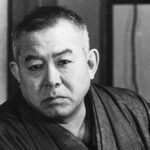

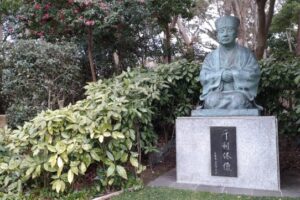
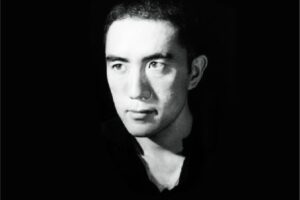
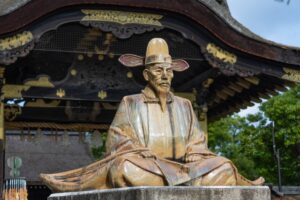
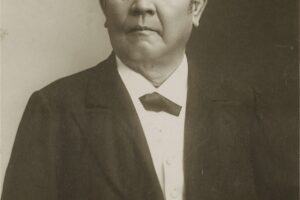
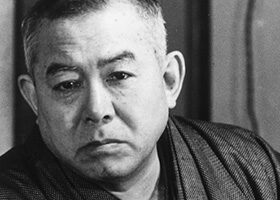
コメントを残す